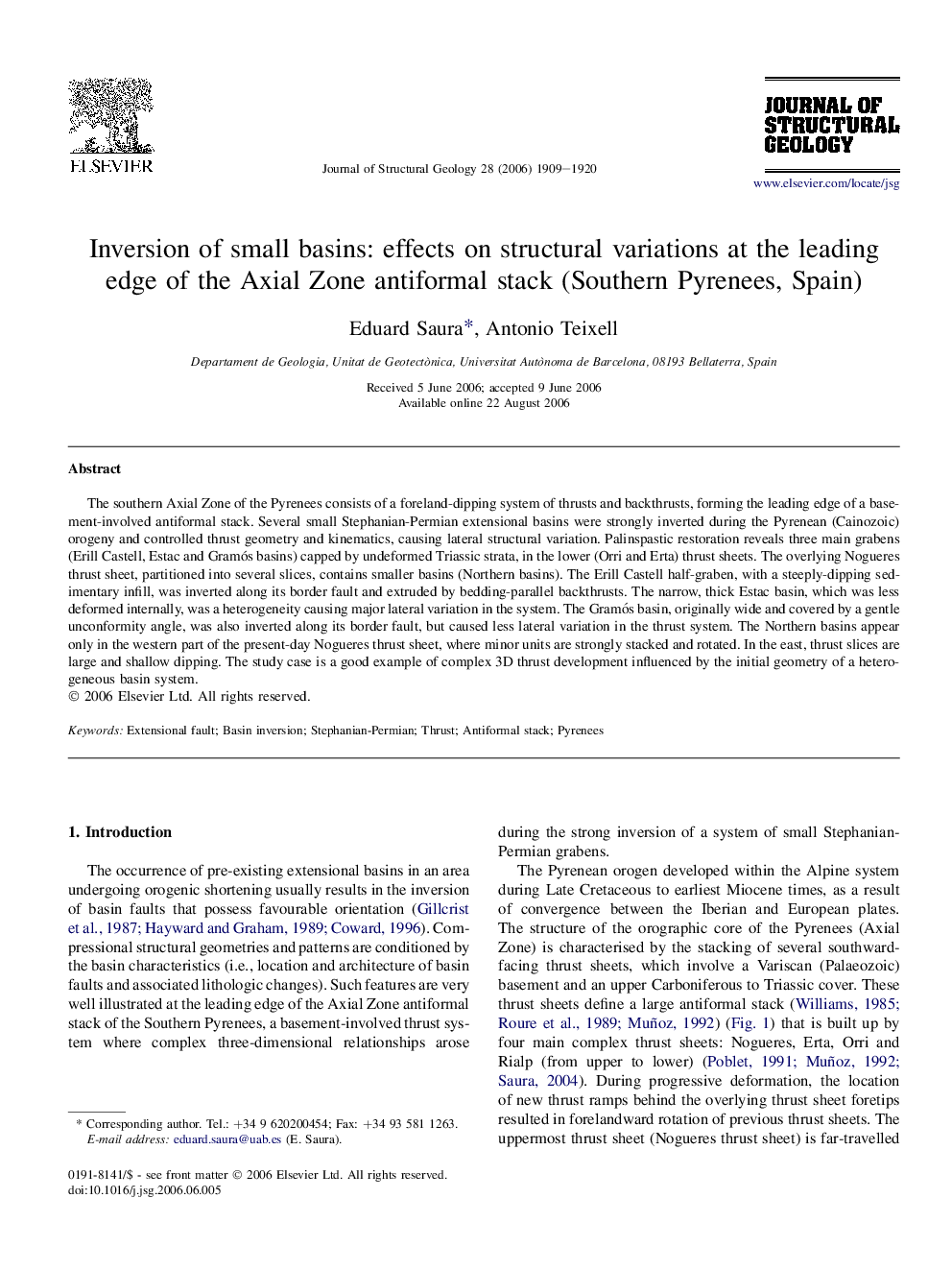| Article ID | Journal | Published Year | Pages | File Type |
|---|---|---|---|---|
| 4734481 | Journal of Structural Geology | 2006 | 12 Pages |
The southern Axial Zone of the Pyrenees consists of a foreland-dipping system of thrusts and backthrusts, forming the leading edge of a basement-involved antiformal stack. Several small Stephanian-Permian extensional basins were strongly inverted during the Pyrenean (Cainozoic) orogeny and controlled thrust geometry and kinematics, causing lateral structural variation. Palinspastic restoration reveals three main grabens (Erill Castell, Estac and Gramós basins) capped by undeformed Triassic strata, in the lower (Orri and Erta) thrust sheets. The overlying Nogueres thrust sheet, partitioned into several slices, contains smaller basins (Northern basins). The Erill Castell half-graben, with a steeply-dipping sedimentary infill, was inverted along its border fault and extruded by bedding-parallel backthrusts. The narrow, thick Estac basin, which was less deformed internally, was a heterogeneity causing major lateral variation in the system. The Gramós basin, originally wide and covered by a gentle unconformity angle, was also inverted along its border fault, but caused less lateral variation in the thrust system. The Northern basins appear only in the western part of the present-day Nogueres thrust sheet, where minor units are strongly stacked and rotated. In the east, thrust slices are large and shallow dipping. The study case is a good example of complex 3D thrust development influenced by the initial geometry of a heterogeneous basin system.
